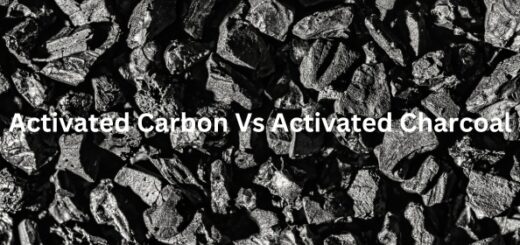What Is Wood-Based Activated Carbon? Uses, Benefits & How It’s Made

Another alternative name for wood-based activated carbon is biomass activated carbon (AC). It is produced by utilizing bamboo and wood processing residues, diverse nutshells, or other biomass elements as raw materials. These materials go through a series of processes involving activation, carbonization, drying, washing, and screening through chemical and physical methodologies. This type of activated carbon has optimum pore structure, surface area, and powerful adsorption capacity, making it a commonly used adsorbent, catalyst, and catalyst carrier.
Moreover, it displays both chemical and physical properties, allowing the selective adsorption of diverse substances in liquid and gas phases for objectives such as refining, decolouration, deodorization, disinfection, and purification. Subsequently, the adsorption process of activated carbon is physical, allowing for the elimination of impurities from used activated carbon through AC regeneration under low-pressure and high-temperature conditions, thus restoring its original activity and enabling persistent usage.
Know How: Wood-Based Activated Carbon Production
To comprehend its appropriate production process, one needs to have a holistic knowledge of how reputed AC manufacturers like Suneeta Carbons carry out the methodology.
The process commences with two stages-
- Carbonization Stage- Here, the primary equipment is the externally heated rotary kiln carbonization furnace. At this stage, biomass raw materials are steadily heated in the furnace in an oxygen-free environment. Almost all non-carbon elements in the raw material decompose at high temperatures and are expelled as gases, leaving carbon atoms that form the initial structure of activated carbon.
- Activation Stage- At this stage, the primary equipment is the internally heated rotary kiln activation furnace. The carbonized material goes through secondary heating at high temperatures in an oxygen-free furnace. A perfect pore structure is obtained when the material is heated to a certain level and high-temperature steam is applied to it.
Then comes the strategic processes-
- Screening: The carbonized element is screened into specific particles. Our team at Suneeta Carbons ensures uniform activation of the biomass carbon entering the activation furnace and maintains optimal strength.
- Activation Process: At this point, the crushed particles of carbon within a particular size range are sent to the activation furnace. Subsequently, certain parameters such as furnace rotation speed, steam quality, air ratio, and feed amount are optimized and tested in the laboratory according to product technical features to determine and fix the optimal parameter values. This allows the perpetual production of qualified and stable products.
- Grinding Process: The final activated carbon is processed at the mill and ground to the desired particle size as specified by the client.
- Activation Material Screening and Crushing Process: The activated material is scrutinized and crushed to the specific strength according to the product’s technical specifications.
- Assessment of Finalized Product: Our expert team takes a sample from each batch for accurate assessment of various technical indicators. Once tested thoroughly, it is sent for packaging.
- Acid/Water Washing and Drying: Here, removal of organic salts takes place along with minimizing ash content and optimization of micropores.
- Packaging: It forms a vital step at Suneeta Carbons as we cater to our international clientele as well as domestic ones.
Applications of Wood-Based Activated Carbon: –
This particular activated carbon is widely used in diverse industries such as the defence sector, agriculture, and the daily lives of people’s households due to its well-developed micropore structure and commendable adsorption characteristics. It has a significant role in the nation’s economy as well, due to its wide application sectors.
In brief, the industrial sectors that effectively use activated carbon products are-
- Pharmaceutical (as a detoxifying agent)
- Food & Beverages (Decolorization)
- Metallurgy
- Agriculture (as a social conditioner)
- Environmental Protection
- Surface and Wastewater Treatment at Municipalities
- National Defence, etc
There are other sectors that utilize Wood-Based Activated Carbon, on an indirect basis, where it is used in the production of upstream products in the production chain. These sectors are-
- Aviation
- Aerospace
- Electronics and Electrical Power Stations
Perks of Wood-Based Activated Carbon
Some of the benefits of wood-based AC have already been indicated in the column above. But, to put them into perspective, we have furnished them below-
- Commendable adsorption capacity- due to its porous composition, allowing it to efficiently eliminate impurities, contaminants, and odours from air and water.
- Economical- since its manufacturing process is energy-efficient, making it an economical solution for purification requirements.
- Environment Friendly- since it is derived from renewable sources, it helps reduce carbon emissions and is identified as an eco-friendly choice over traditional AC types.
- Versatile applicability- As mentioned earlier, wood-based AC is used in diverse sectors and settings. From the food and beverages industry to municipal water treatment plants, it offers a holistic solution for a wide range of purification requirements.
- Elimination of organic contaminants- This activated carbon is significantly effective in the elimination of organic compounds, like solvents, pesticides, and other volatile organic compounds (VOCs).
Conclusion and Key Takeaways
Being a pioneer in the activated carbon manufacturing market in India and beyond, we focus on the quality of wood based powdered activated carbon or its granular form. We follow all the testing protocols that define the optimum ash, density, moisture, and pH values. And that is the only reason our clientele comes back to us.
So, before you purchase wood-based activated carbon, check whether the manufacturer is offering the product with reasonable packaging and the products meet the industry standards (ASTM, JIS, AWWA, etc). And if you choose Suneeta Carbons, our comprehensive services ensure a hassle-free delivery, with flawless packaging and ultimate quality of activated carbon.


